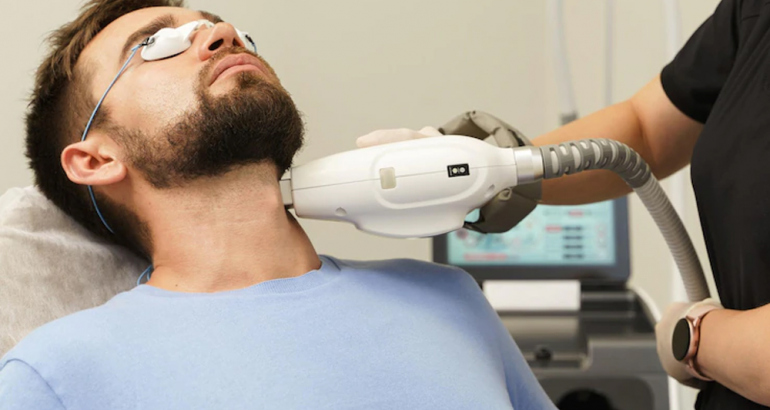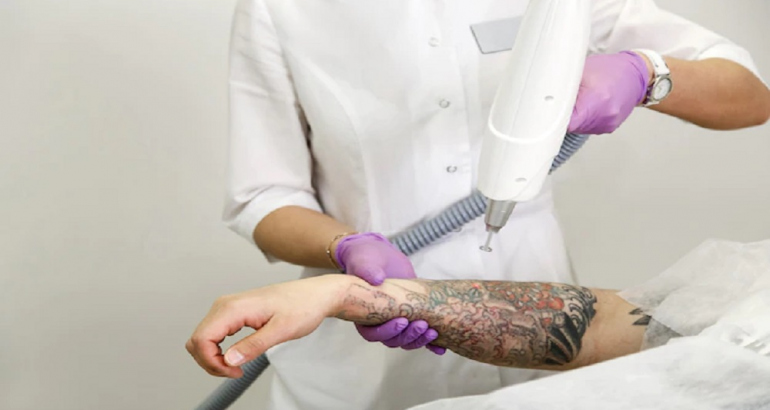A focused light beam (laser) is used in the treatment of laser hair reduction to remove unwanted hair.
When removing hair with a laser, a laser emits light that is absorbed by the pigment in the hair (melanin). The light energy is converted to heat, which damages the tube-shaped sacs that produce hair on the skin. This injury inhibits or delays the growth of new hair.
Laser hair reduction often doesn’t eliminate hair completely, despite the fact that it effectively and temporarily slows hair growth. Several laser treatments are necessary for initial hair removal, and further treatments may be required in the future. Laser hair removal is effective on all skin tones, but it works best on people with fair complexion and dark hair.
Laser hair removal helps eliminate unwanted hair. Among the common locations treated are the legs, armpits, chin, upper lip, and bikini area. It is feasible to remove unwanted hair practically everywhere, with the exception of the eyelid or surroundings. Tattooed skin also shouldn’t be treated.
The effectiveness of laser hair removal is influenced by skin type and hair color. The key tenet is that skin pigment should not absorb light, unlike the pigment in the hair. The laser should only damage the hair follicles; it shouldn’t affect the skin. The best results are obtained by having dark hair and light skin, which contrasts with each other.
However, thanks to advancements in laser technology, laser hair removal is now an option for people with darker skin tones. The danger of skin injury is higher when there is minimal contrast between the color of the hair and the skin. Gray, red, blond, and white hair colors don’t absorb light effectively, therefore laser hair removal is less successful on them. However, light-colored hair laser treatment solutions are still being researched.
Rarely, laser hair removal can result in skin abnormalities such as scorching, crusting, scarring, or other skin alterations. Graying of treated hair or excessive hair growth around treated regions are rare but possible side effects, especially for people with darker skin.
Due to the risk of serious eye injury, laser hair removal is not advised for the eyelids, brows, or surrounding areas.
Laser hair removal normally requires two to six sessions. The treatment interval will vary depending on the area. The procedure could be repeated in four to eight weeks in regions where hair grows quickly, such as the upper lip. The treatment may be administered every 12 to 16 weeks in regions with sluggish hair growth, like the back.
During the initial few hours following laser hair removal, you can experience swelling and redness.
To relieve any discomfort, apply ice to the affected area. If a skin reaction occurs immediately after laser hair removal, the doctor may apply a steroid cream to the affected area.
Avoid sunlight and tanning for six weeks after laser hair removal and in between appointments, or as prescribed by your doctor. Use a broad-spectrum SPF30 sunscreen daily.



